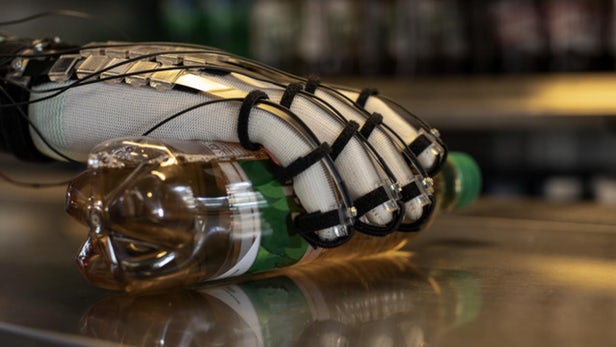
Breaking News
 They've Been Feeding You Poison (And Calling It Food)
They've Been Feeding You Poison (And Calling It Food)
 Tattoo ink may cause prolonged changes to the immune system
Tattoo ink may cause prolonged changes to the immune system
 Travel gadget promises to dry and iron your clothes – totally hands-free
Travel gadget promises to dry and iron your clothes – totally hands-free
 Duckweed: A sustainable, protein-packed food source smeared by Big Ag
Duckweed: A sustainable, protein-packed food source smeared by Big Ag
Top Tech News
 Perfect Aircrete, Kitchen Ingredients.
Perfect Aircrete, Kitchen Ingredients.
 Futuristic pixel-raising display lets you feel what's onscreen
Futuristic pixel-raising display lets you feel what's onscreen
 Cutting-Edge Facility Generates Pure Water and Hydrogen Fuel from Seawater for Mere Pennies
Cutting-Edge Facility Generates Pure Water and Hydrogen Fuel from Seawater for Mere Pennies
 This tiny dev board is packed with features for ambitious makers
This tiny dev board is packed with features for ambitious makers
 Scientists Discover Gel to Regrow Tooth Enamel
Scientists Discover Gel to Regrow Tooth Enamel
 Vitamin C and Dandelion Root Killing Cancer Cells -- as Former CDC Director Calls for COVID-19...
Vitamin C and Dandelion Root Killing Cancer Cells -- as Former CDC Director Calls for COVID-19...
 Galactic Brain: US firm plans space-based data centers, power grid to challenge China
Galactic Brain: US firm plans space-based data centers, power grid to challenge China
 A microbial cleanup for glyphosate just earned a patent. Here's why that matters
A microbial cleanup for glyphosate just earned a patent. Here's why that matters
 Japan Breaks Internet Speed Record with 5 Million Times Faster Data Transfer
Japan Breaks Internet Speed Record with 5 Million Times Faster Data Transfer
Light, thin VR gloves put wearers in touch with virtual objects

Virtual reality motion controllers work pretty well at syncing up the movements of digital digits with your real ones, but they aren't all that good at recreating the sense of touch. Scientists from EPFL and ETH Zurich have developed new haptic gloves that could help users get in touch with virtual objects.
Haptic feedback systems aren't particularly new. We've seen them crammed into gloves, boots, jackets, and even full-body suits, and made real through vibrating motors, inflatable bladders, electrical fields or just mechanical components that push back.
The new gloves, dubbed DextrES, work using a pretty novel technique. Embedded into the fingers of nylon gloves are strips of an elastic metal with a thin insulator between them. When a virtual object needs to be simulated, a voltage difference is applied to the metal strips, which causes them to stick together. That in turn creates a braking force – the wearer physically can't close their fingers past a certain point, giving them the firm impression that there's something in their hand. When the object is dropped, the voltage is lifted and they can move their fingers freely again.

 Advanced Propulsion Resources Part 1 of 2
Advanced Propulsion Resources Part 1 of 2

